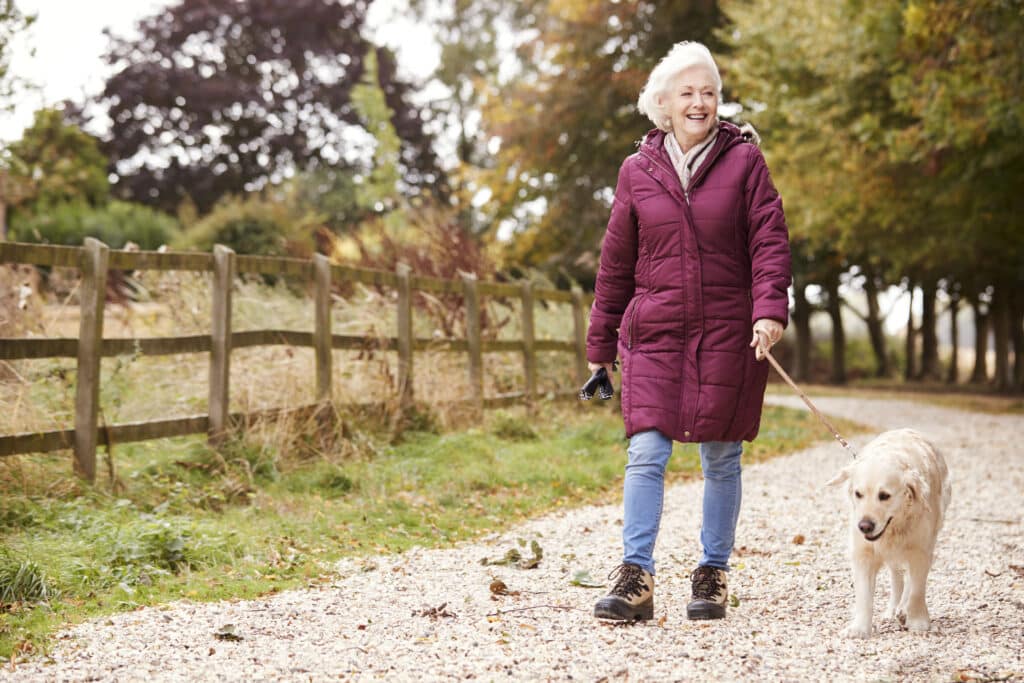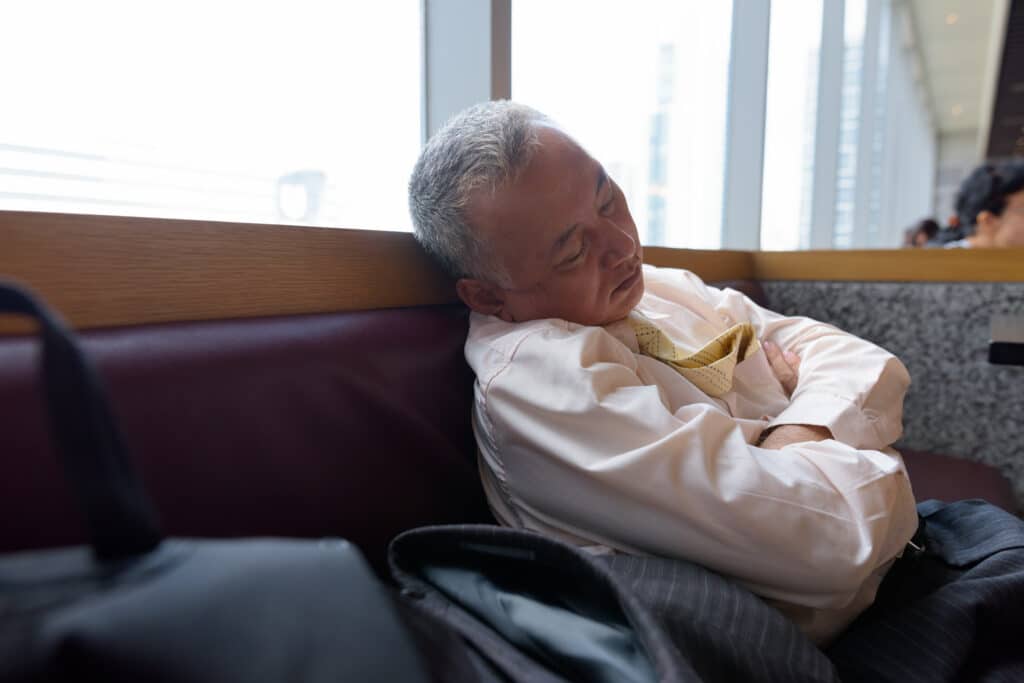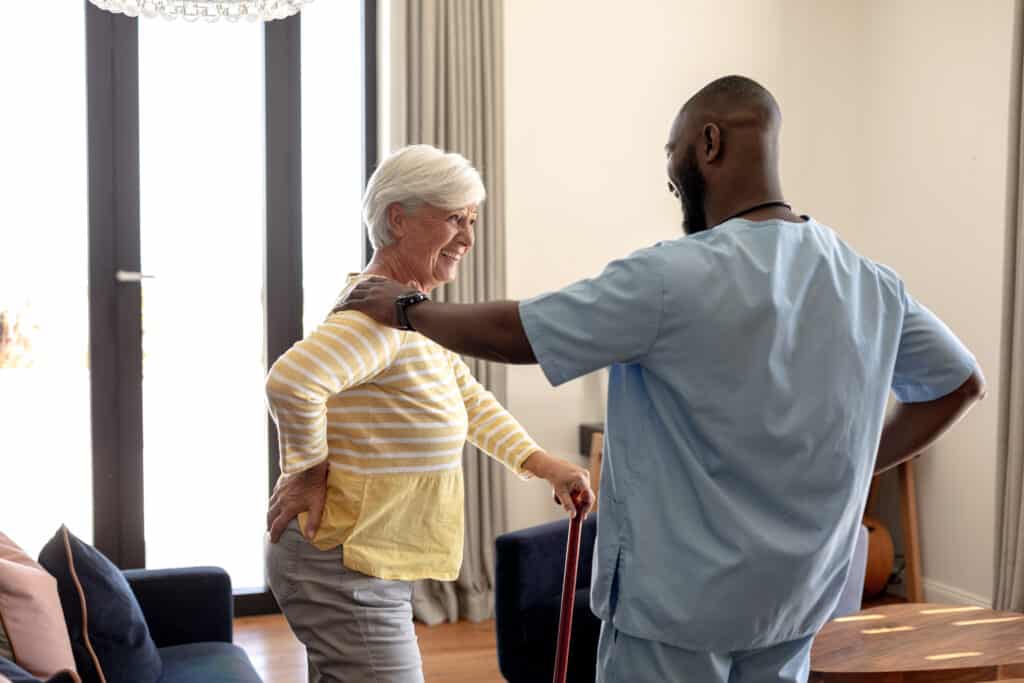Ever wondered why your once quick and effortless movements seem to slow down over the years? This gradual change isn’t just about getting older—it results from complex factors that affect your body and mind.
These physical changes play a significant role, from shifts in muscle composition to a decline in heart and lung efficiency. But that’s not all.
Psychological influences, like the fear of injury and evolving life priorities, also contribute to the slowdown, while conditions such as arthritis, Parkinson’s disease, and osteoporosis further impact mobility.
Understanding these underlying causes is the first step toward maintaining strength and agility. With the right strategies, lifestyle adjustments, physical therapy, and targeted medical care, you can counteract these effects and stay active, mobile, and vibrant.
Join me in exploring the science behind why people move slower as they age to discover practical ways to keep your body strong and your movements fluid.
The Science Behind Moving Slower

It’s common to notice that our movements become slower and less vigorous with age. But what exactly drives this gradual decline?
The slowdown is rooted in several physiological changes that occur naturally over time. These include shifts in muscle fiber composition, heart and lung function alterations, and a natural decline in metabolic rate.
Understanding these changes can offer valuable insights into how our bodies age and what we can do to maintain strength, stamina, and overall mobility.
Change in Muscle Fibers
One of the most significant changes occurs in your muscle fibers. Your muscles are made up of two different types of fibers: fast-twitch and slow-twitch.
You can think of fast-twitch fibers like sports cars that provide quick bursts of power and speed but wear out quickly. On the other hand, slow-twitch fibers are more like fuel-efficient cars—they’re slower but can handle more extended periods of activity.1
Aging causes a natural shift from fast-twitch to slow-twitch muscle fibers, meaning our muscles become less suited for speed and more so for endurance.
Because of this shift, your movements might feel slower and less powerful. Studies attribute this change to fewer motor neurons that control fast-twitch fibers.
Considering these natural changes can help you choose activities that will be the most beneficial for your body’s maintenance of muscle strength and function as you age. For example, incorporating resistance training and endurance exercises that challenge both types of muscle fibers can help you stay active and moving for years to come.
Changes in Heart and Lung Function
Your ability to move depends on the health of your cardiovascular (heart) and respiratory (lung) systems. As you age, both systems naturally undergo changes that reduce their efficiency.
The heart muscle may stiffen, and arteries can harden, making it harder to pump blood efficiently. Additionally, the heart’s ability to increase blood flow during physical activity diminishes, reducing stamina.
Similarly, the lungs lose elasticity, and the muscles that control breathing weaken. These changes decrease lung capacity, reduce oxygen supply, and increase breathlessness during exertion.
While these changes occur in everyone, they can be more pronounced in those with conditions like hypertension, diabetes, or COPD, which further impair heart and lung function.
Engaging in regular aerobic activities like walking, cycling, or swimming can help counteract these effects, improve heart and lung health, and maintain energy and mobility as you age.
Natural Metabolic Slowdown
Another part of aging that contributes to slower movement is a slowdown in metabolism. This means that the chemical processes in our bodies that keep us alive, like turning food into energy, don’t work as fast as they used to, leading to less energy production.
Decreased muscle mass, hormone changes, and less physical activity are the usual culprits behind these changes.
When your metabolism is slower, your body doesn’t burn as many calories. This can lead to weight gain if you don’t change how you eat or boost your activity levels.
A slower metabolism can also make you feel tired and sluggish, but it doesn’t have to take over your lifestyle. Focusing on your physical activity and nutrition can boost your metabolism and increase your energy.
Adding in strength training exercises to your workout regimen can increase your muscle mass and boost your metabolic rate. Eating a balanced diet full of proteins, healthy fats, and complex carbohydrates can make a difference, too.
In my experience working with older adults, I find that these natural body changes have a major effect on slowing down over time. Even the most determined and motivated older adults may be limited in their endurance and performance to some degree, so having strategies in place is vital to countering these natural processes.
Psychological and Lifestyle Factors

While physical changes play a significant role in how we move as we age, our mindset and lifestyle choices are equally influential. Shifts in our psychological outlook, such as a heightened fear of injury or a change in life’s priorities, can profoundly impact our movement patterns.
These factors can lead to more cautious behavior and a slower pace of life, which, while protective, can also contribute to reduced mobility and activity levels.
Understanding these psychological and lifestyle influences is crucial for maintaining physical health and overall well-being as we age.
Fear of Injury
Older adults are more at risk of injuries, and the recovery process takes a little longer, so it’s natural to develop a fear of falling or getting hurt as you age. However, moving with more intention and caution can be part of the reason our movement tends to slow down with aging.
Unfortunately, being more careful and cautious can lead to a decrease in how physically active you are, which can worsen mobility loss.3
Finding the right balance between staying safe and active is important; many exercise routines are designed for that exact purpose. Exercise regimens geared toward older adults typically include movements that help maintain mobility and reduce the risk of injury.
For example, engaging in activities such as yoga and tai chi are great ways to improve your balance and flexibility, allowing you to move easier and with more confidence.
As a physical therapist who works with many older adults, this is the other area where I tend to notice the most limitations.
I have worked with so many physically healthy older adults who have limited mobility because they’ve been told that they’re fragile and are afraid to move because of it. With the guidance of your PT or doctor, you can overcome many age-related stigmas around weakness or fragility.
Changes in Priorities
Sometimes slowing down isn’t such a bad thing.
A natural change in priorities often happens as we get older. It’s common for seniors to feel that they don’t need to rush through life like they used to.
Even though this change in speed can result in slower movement, it shows a more mindful and calm approach to living. Prioritizing quality over speed in life allows you to enjoy activities and experiences fully.
This change in priorities can also benefit your emotional and mental well-being. When life moves slower, you’re able to focus on what’s really important to you, and have time to engage in the activities that bring you joy that you were always too busy for.
Embracing this change of pace can help you live a more balanced, fulfilling life as you grow older.
Core Conditions Behind Slower Movement & How to Manage Them

Several medical conditions can slow movement, impacting your ability to stay active and independent.
Understanding these conditions and using targeted interventions can help maintain mobility and quality of life. Below are common conditions that contribute to slower movement and interventions that can mitigate their effects.
Arthritis
Arthritis is a leading cause of reduced movement, causing joint inflammation, pain, stiffness, and swelling.
As arthritis progresses, everyday tasks like walking or bending become harder. Over time, discomfort and restricted joint function lead to slower, more deliberate movements.
Management Tools for Arthritis
Managing arthritis involves medication, physical therapy, and lifestyle changes. NSAIDs help control pain and inflammation, while physical therapy improves joint flexibility and strength.
Low-impact activities like swimming keep you active without worsening joint pain. Maintaining a healthy weight also reduces stress on joints, preserving mobility.
Parkinson’s Disease
Parkinson’s disease, a progressive neurological disorder, causes tremors, muscle stiffness, and slowed movement. These symptoms lead to shuffling gait and balance issues, resulting in slower, less coordinated movements and difficulty completing tasks quickly or safely.
Management Tools for Parkinson’s Disease
Managing Parkinson’s involves medication, physical therapy, and specialized exercises. Medications like levodopa boost dopamine levels in the brain.
Physical therapy focuses on improving balance, flexibility, and strength. Activities like tai chi or dance maintain mobility and coordination. Speech and occupational therapy may also address specific symptoms.
Osteoporosis
Osteoporosis weakens bones, increasing the risk of fractures, especially in the hips and spine. This heightened risk often leads to a more cautious and slower approach to movement, affecting gait and overall speed.
Management Tools for Osteoporosis
Managing osteoporosis focuses on bone health through diet, exercise, and medication. Weight-bearing exercises like walking strengthen bones and reduce fracture risk.
Calcium and vitamin D supplements support bone density, while medications like bisphosphonates can further strengthen bones. Regular bone density screenings help monitor the condition.
Diabetes
Diabetes, especially when poorly managed, can lead to peripheral neuropathy, affecting nerves in the legs and feet.
This condition causes pain, numbness, and weakness, making moving quickly or maintaining balance difficult. As a result, people with diabetes may move slower to avoid tripping or falling.
Management Tools for Diabetes
Managing diabetes involves maintaining stable blood sugar levels through diet, exercise, and medication.
Monitoring blood sugar levels, using proper footwear, and staying active are crucial in preventing complications and preserving mobility. Regular check-ups help ensure effective management of the condition.
Sleep Disorders
Sleep disorders like sleep apnea or chronic insomnia can contribute to slower movement by causing fatigue, reduced alertness, and weakened muscles.
Poor sleep quality impacts energy levels, making movement feel sluggish and less coordinated.
Management Tools for Sleep Disorders
Addressing sleep disorders involves improving sleep hygiene and seeking medical treatment. Maintaining a regular sleep schedule, reducing caffeine intake, and managing stress can enhance sleep quality.
For conditions like sleep apnea, using a CPAP machine or other interventions can improve oxygen levels and restore energy, aiding in more fluid movement.
Treatments for Mobility Loss

Maintaining mobility is essential for staying active and independent, but sometimes extra help is needed. Whether it’s due to age-related changes or specific health conditions, there are effective treatments and strategies to keep you moving confidently.
Here’s an overview of the most common and effective treatments for preserving and enhancing mobility:
Physical Therapy
Physical therapy is a cornerstone of mobility management. Skilled therapists create tailored exercise programs that address your unique needs, focusing on building strength, improving flexibility, and enhancing balance.
These programs can range from simple at-home exercises to more advanced therapeutic techniques, all designed to help you move more freely and with less pain.
Regular physical therapy sessions can significantly improve your ability to perform daily activities, reduce the risk of falls, and slow the progression of mobility challenges.
Medical Care
Medical interventions play a critical role in managing conditions that affect mobility.
For instance, medications for Parkinson’s disease can help manage tremors and stiffness, leading to better movement control.
Similarly, the right treatment plan for arthritis can alleviate pain and inflammation, making it easier to stay active. Working closely with your healthcare provider ensures that your mobility-related conditions are managed effectively, allowing you to maintain an active lifestyle.
Assistive Devices
Assistive devices like canes, walkers, and orthotics provide invaluable support for those with mobility issues. Far from being a sign of diminished independence, these tools can enhance your ability to move safely and confidently.
Proper use of assistive devices can help you maintain better posture, reduce the risk of falls, and ensure that you move easily. Consulting with a physical or occupational therapist can help you choose a suitable device and learn how to use it effectively.
These treatments and tools can substantially impact your mobility and overall quality of life. By staying proactive and seeking the proper support, you can continue to enjoy the activities you love, regardless of the challenges that come your way.
Summary
Understanding why people move slower as they age allows you to take charge of your health and work proactively to maintain your mobility.
There are plenty of ways to stay active and live a well-balanced, mobile life, whether through safe exercise routines, working with a physical therapist, or enjoying the activities that matter to you.
Key Takeaways
- Movement naturally slows with age due to physiological changes.
- Muscle fibers shift from fast-twitch to slow-twitch, reducing speed and power.
- Heart and lung function decline, leading to less efficient circulation and oxygen supply.
- Metabolism slows down, contributing to lower energy levels and potential weight gain.
- Fear of injury can result in more cautious, slower movements.
- Changing priorities can lead to a more deliberate pace in daily activities.
- Arthritis, Parkinson’s disease, and osteoporosis are common conditions that slow movement.
- Diabetes and sleep disorders can also contribute to slower, less coordinated movements.
- Physical therapy, medical treatments, and assistive devices help manage mobility loss.
- Maintaining an active lifestyle and healthy habits can mitigate some effects of age-related slowing.
FAQs
Why do people naturally move slower as they age?
Movement slows down due to several physiological changes, including a shift in muscle fiber composition from fast-twitch to slow-twitch, reduced heart and lung efficiency, and a slower metabolic rate. These changes, combined with certain health conditions, lead to a gradual decrease in speed and agility.
How do heart and lung function impact movement in older adults?
As people age, the heart muscle may stiffen, and arteries can harden, making it more challenging to pump blood efficiently. Similarly, the lungs lose elasticity, and the muscles that control breathing weaken, reducing lung capacity. These changes result in decreased stamina and slower movement.
What role do psychological factors play in slower movement with age?
Psychological factors, such as a fear of injury and shifting life priorities, can lead to more cautious behavior and slower movement. While these factors are protective, they can reduce mobility if not appropriately managed.
How do common conditions like arthritis and Parkinson’s disease affect movement?
Arthritis causes joint inflammation, pain, and stiffness, leading to slower, more deliberate movements. Parkinson’s disease, a neurological disorder, results in tremors, muscle stiffness, and balance issues, further reducing movement speed and coordination.
What can be done to maintain mobility despite age-related changes?
To maintain mobility, engage in regular physical therapy, adopt medical treatments for specific conditions, and use assistive devices like canes or walkers. Additionally, staying active, eating well, and managing health conditions proactively can help mitigate the effects of age-related slowing.
Resources
- Siparsky PN, Kirkendall DT, Garrett WE Jr. Muscle changes in aging: understanding sarcopenia. Sports Health. 2014 Jan;6(1):36-40. doi: 10.1177/1941738113502296. PMID: 24427440; PMCID: PMC3874224.
- Roman MA, Rossiter HB, Casaburi R. Exercise, aging and the lung. Eur Respir J. 2016 Nov;48(5):1471-1486. doi: 10.1183/13993003.00347-2016. Epub 2016 Oct 6. PMID: 27799391.
- https://www.nia.nih.gov/health/falls-and-falls-prevention/falls-and-fractures-older-adults-causes-and-prevention#:~:text=More%20than%20one%20in%20four,many%20falls%20can%20be%20prevented.




